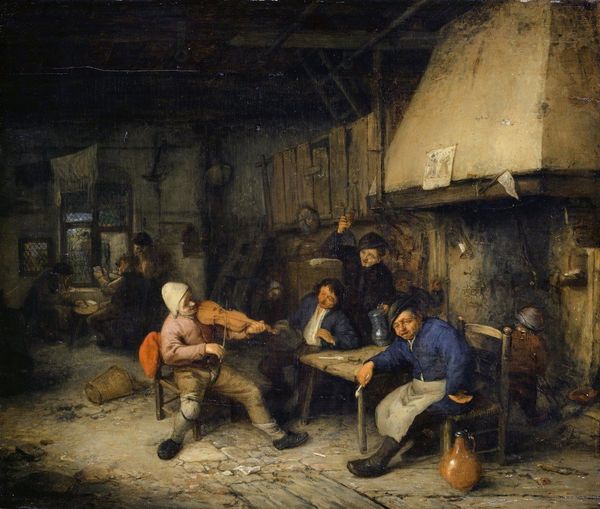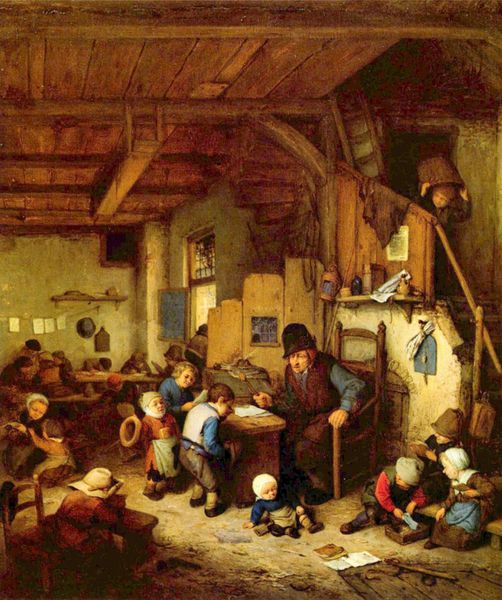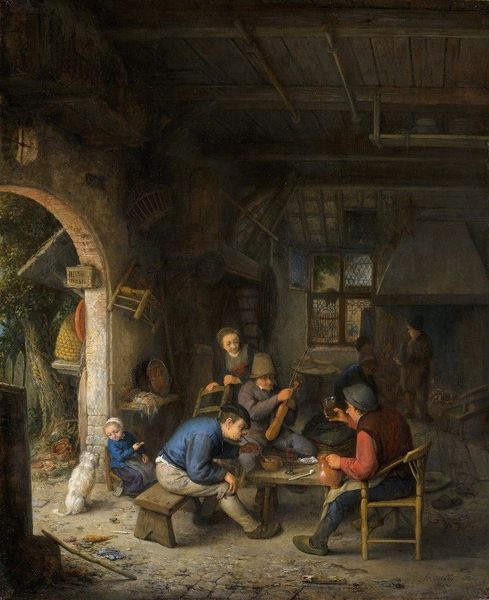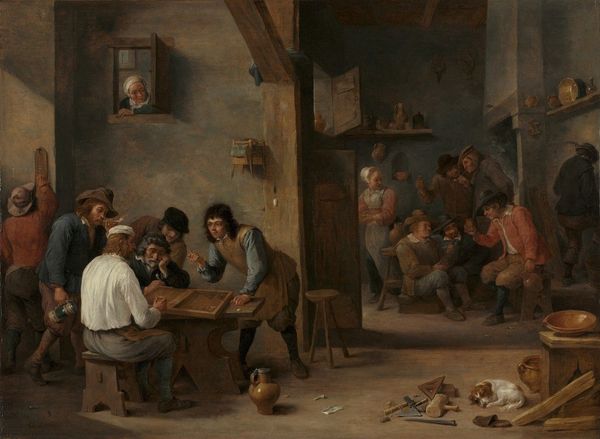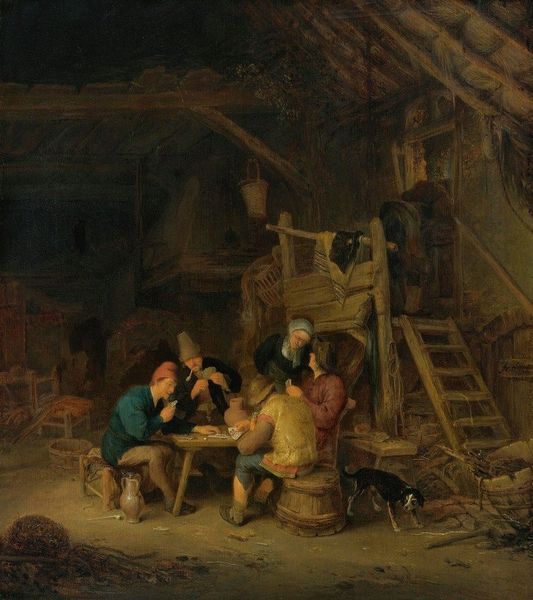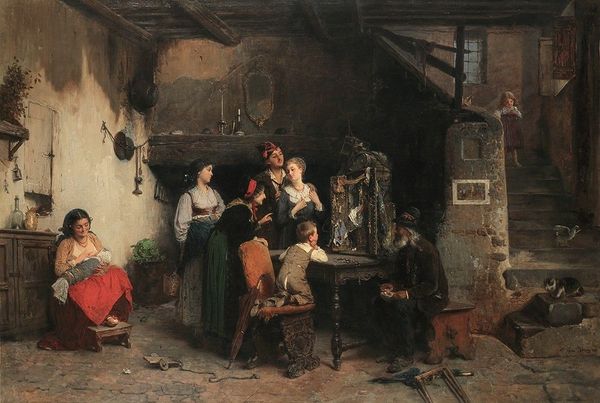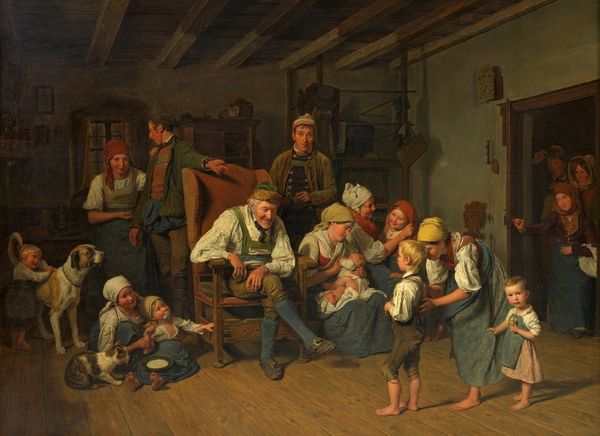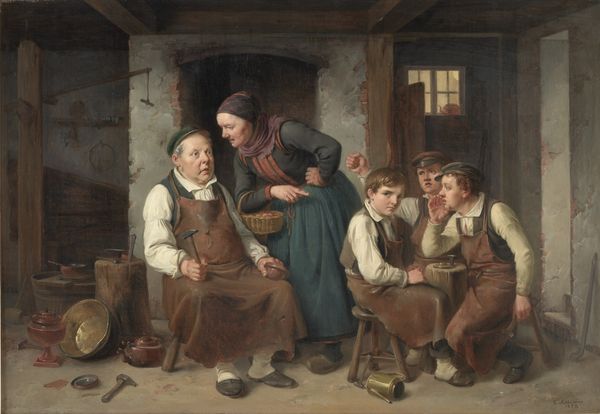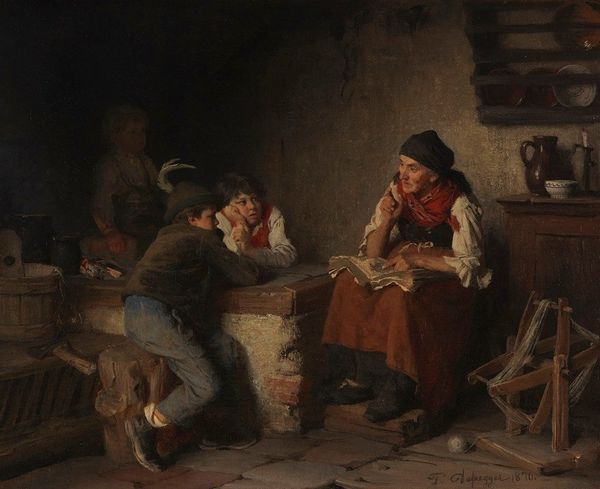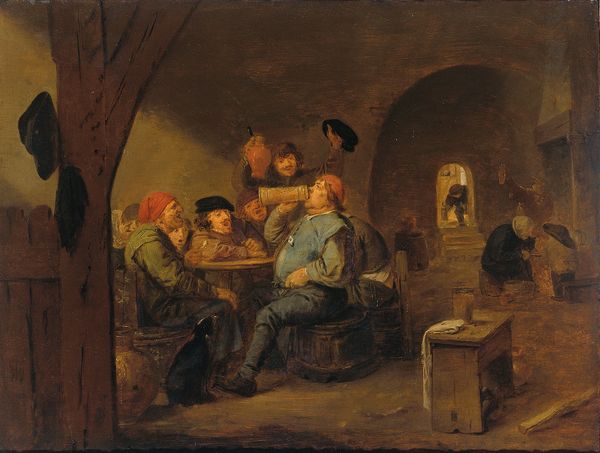
painting, oil-paint
#
portrait
#
figurative
#
narrative-art
#
dutch-golden-age
#
painting
#
oil-paint
#
figuration
#
genre-painting
#
realism
Copyright: Public Domain: Artvee
Curator: Let’s discuss Adriaen van Ostade's "Peasants in an Interior," created around 1661. What are your initial thoughts? Editor: It’s an oil painting depicting a gathering, maybe a family, in what looks like a humble home. The atmosphere feels… lived-in, a bit chaotic but also kind of cozy, in a strange way. What do you see in this piece? Curator: The charm can be deceiving. While the Dutch Golden Age is often celebrated for its prosperity, paintings like this offer a glimpse into the lives of those excluded from that narrative. The "genre scene," as it’s called, wasn’t merely a neutral observation. How might social class and power dynamics play out within the interior space itself? Editor: I hadn't considered that angle. It seems easy to romanticize the domesticity. So, you're suggesting van Ostade is perhaps commenting on the socio-economic inequalities of his time through this depiction of peasant life? Curator: Precisely. Consider the limited light, the rough textures, the lack of obvious finery. Van Ostade wasn’t part of the elite, but he was making art for a market that certainly included them. What narratives might these images be reinforcing, or challenging, about the "other"? Were these paintings a form of social critique, or something else? Editor: It's like looking at it from a totally different angle, moving beyond the simple depiction of daily life to thinking about how it participates in constructing social meaning and power. It certainly challenges my first assumptions. Curator: Exactly. Art history is not just about identifying styles or techniques. It’s about questioning whose stories get told and how, revealing the complex interplay of art and society. Editor: I see it now. Thanks for shedding some light and for the insight on looking beyond the surface narrative. Curator: Indeed. Remember, the role of art often serves as a critical mirror to reflect historical complexities.
Comments
rijksmuseum about 2 years ago
⋮
Three men and a woman discuss daily matters, and a child eats soup or porridge while a dog looks on. Peasant life does not seem at all bad. In Van Ostade’s early works, peasants regularly tumble over one another brawling, but in his later paintings, like this one, they are usually calmer and much more collected.
Join the conversation
Join millions of artists and users on Artera today and experience the ultimate creative platform.

